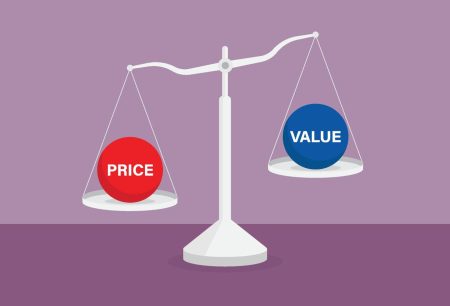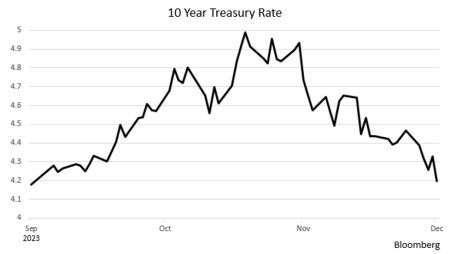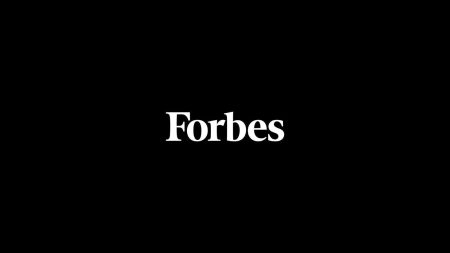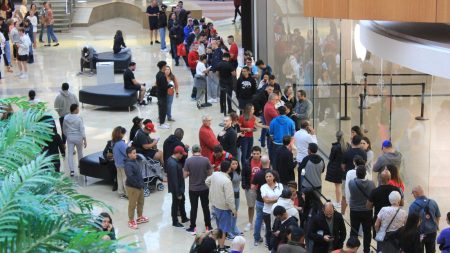U.S. stocks were trimming gains on Thursday afternoon after the Federal Reserve’s preferred inflation gauge proved largely in line with expectations for July, leaving investors looking ahead to Friday’s August jobs report.
How stocks are trading
-
The Dow Jones Industrial Average
DJIA
lost 19 points, or less than 0.1%, at 34,870, erasing a gain of nearly 180 points. -
The S&P 500
SPX
rose 7 point, or 0.2%, to 4,522 -
The Nasdaq Composite
COMP
gained 53 points, or 0.4%, to trade at 14,072.
On Wednesday, the Dow, S&P 500 and Nasdaq each booked a fourth straight winning session. That trimmed the S&P 500’s August loss to 1.6%, leaving the large-cap benchmark on track for its first negative month in six months, according to Dow Jones Market Data.
What’s driving markets
Data showed the cost of goods and services rose a mild 0.2% in July, in line with the forecast for the personal-consumption expenditures index produced by a Wall Street Journal poll of economists. Year over year, the measure showed inflation rose 3.3%, compared with 3% in June.
The core PCE reading, which strips out food and energy prices and is often described as the Fed’s favorite inflation measure, was also in line with expectations, showing a 0.2% monthly rise, while the year-over-year rate ticked up to 4.2% from 4.1%.
U.S. stocks were wavering on Thursday afternoon after trading modestly higher in the morning session as three major indexes were struggling to extend their four-day winning streak on the final trading day of August.
The lack of an inflation surprise contributed to “a fairly muted” stock-market reaction as investors had already priced in the inflation readings were going to tick higher due to base effects, said Lydia Boussour, senior economist at EY.
“But when you look at inflation data on a sequential basis, those 0.2% month-over-month increases were encouraging prints — that’s cooldown in the momentum,” Boussour said in a phone interview with MarketWatch. “These prints of 0.2% are really what the Fed wants to see to get inflation back towards the 2% target.”
Boussour expects the disinflation trend to continue in the remainder of 2023, which should allow the Fed to “stay put.” “We do think that the Federal Reserve has reached the end of the tightening cycle and we do not expect further rate hikes,” she said.
See: The U.S. dollar strikes back: What’s next after August rally
The S&P 500’s rally to a four-week high has coincided with benchmark Treasury yields
BX:TMUBMUSD10Y
pulling back from multiyear peaks as traders bet that some weaker jobs data of late will allow the Federal Reserve to stop raising borrowing costs.
“Since softer employment metrics are one of the most critical inputs for inflation normalization, it has led to a significant shift in the near-term outlook for U.S. interest rates and ignited a rally in stocks and other high-risk assets,” said Stephen Innes, managing partner at SPI Asset Management.
In other data, initial jobless claims fell by 4,000 to 228,000 in the week ending Aug. 26, the Labor Department said. It’s the lowest level of claims since the week ending July 29. Economists polled by The Wall Street Journal had estimated new claims would rise 5,000 to 230,000.
Read: What August’s jobs report could mean for stocks
Investors are now turning their attention to Friday’s August nonfarm payrolls report, which is due out at 8:30 a.m. Eastern and will provide more information “as to whether the labor market is actually softening,” said Richard Hunter, head of markets at Interactive Investor.
The U.S. is expected to add 170,000 jobs in August, down from 187,000 in the prior month, based on a poll of economists by The Wall Street Journal. In contrast, the U.S. added an average 287,000 new jobs a month in the first four months of the year.
“With traders currently assuming an interest-rate pause for September, the question remains as to whether the end of the hiking cycle has been reached. Such an outcome would be positive for growth stocks in particular, which has enabled ongoing strength within the megacap technology sector,” Hunter added.
Boussour said her team expects “a noisy August jobs report” on Friday despite “the overall picture will be the labor market conditions continue to soften essentially,” but the strikes of SAG-AFTRA and southern California hotel workers, as well as the bankruptcy of trucking company Yellow Corp.
YELLQ,
could weigh on payroll growth in August.
“But that is likely to be somewhat offset by stronger payrolls on the government side,” she said.
A trio of well-received earnings reports from technology companies Salesforce Inc., Okta Inc. and CrowdStrike Holdings Inc., delivered after Wednesday’s closing bell, were also providing some support to sentiment.
Companies in focus
-
Salesforce shares
CRM,
+3.41%
rallied 3.6%, leading Dow gainers, after the company delivered a strong outlook and improved margins two weeks ahead of the customer-relations-management software giant’s annual Dreamforce confab in San Francisco. -
Shares of Okta Inc.
OKTA,
+13.48%
rose 14.1%. The identity-management software company late Wednesday hiked its annual earnings outlook by about a third after its worst-case scenario of weak business spending never materialized. -
CrowdStrike shares
CRWD,
+8.88%
jumped 8.9% after the cybersecurity company topped expectations with its results and outlook for the latest quarter. -
DGUBS Group shares
UBS,
+5.26%
rose 6.1%, as the Swiss bank reported a $29 billion profit and said inflows to wealth management have been positive this quarter. -
Dollar General Corp.’s stock
DG,
-12.39%
dropped 12.6% after the discount retailer posted weaker-than-expected second-quarter earnings and lowered its guidance. -
Shares of AMC Entertainment Holdings Inc.
AMC,
+1.26%
advanced 1.5% after the announcement that a Taylor Swift movie is coming to theaters in October. Shares of other theater-chain operators, including Cinemark Holdings Inc.
CNK,
+1.53%
and Imax Corp.
IMAX,
+0.63% ,
were also higher.
Jamie Chisholm contributed
Read the full article here















